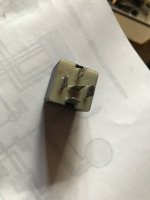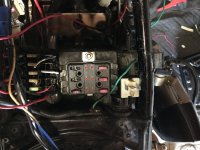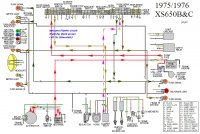There re so many wrong diagrams in the Diagram thread its not funny........Trying to sort out th mess and correcting them is a wast of time. The 2 Simplified diagrams in post #1 is a starting point................The fuse block can be installed where the 20amp fuse is and the rest removed.............Use the last diagram for the installation of the starter solenoid and indicators are simple to connect up
http://www.xs650.com/threads/some-wiring-diagrams.61/
Doing a full continuity test through a loom helps to get the head around the difference between the diagrams and the actual layout on the bike.........I had the same problem trying to get my head around the difference between the bike loom and the diagram...........just didn't compute. Once i had done the full continuity test, (still took a while), i finally related the 2..........
Another way is to brake down the diagrams into circuits.........
View attachment 127083




